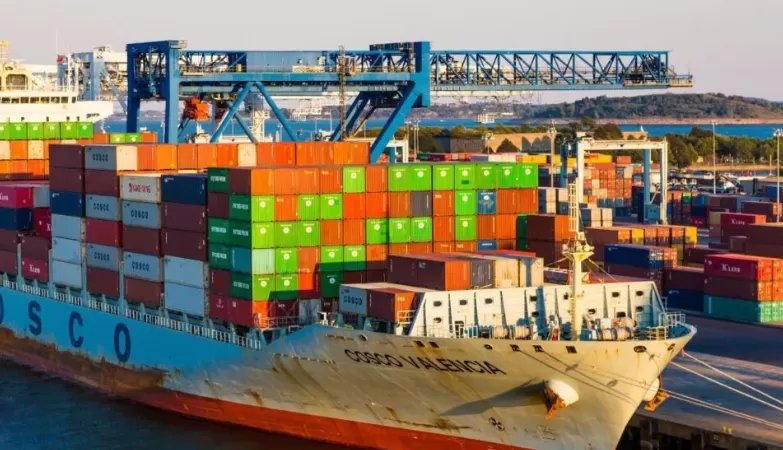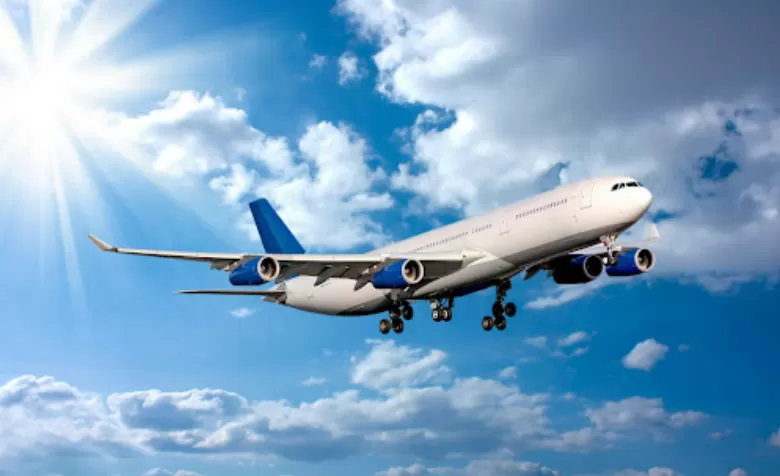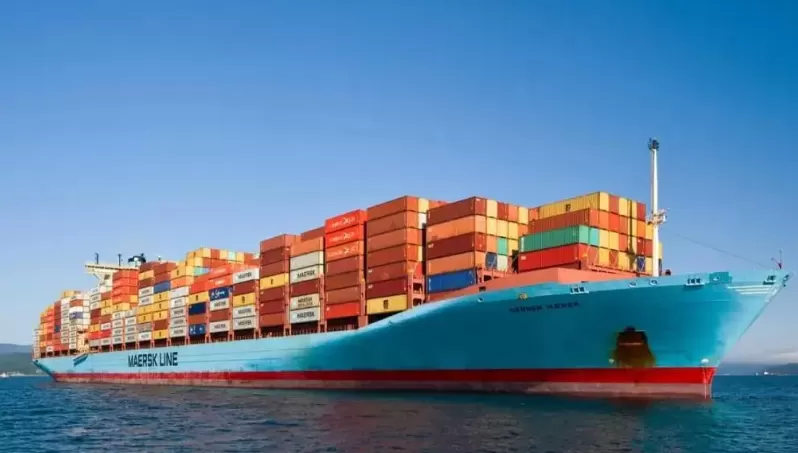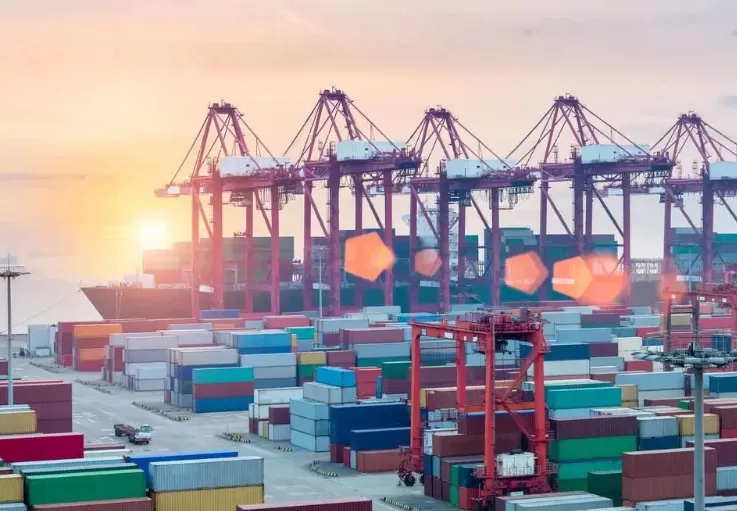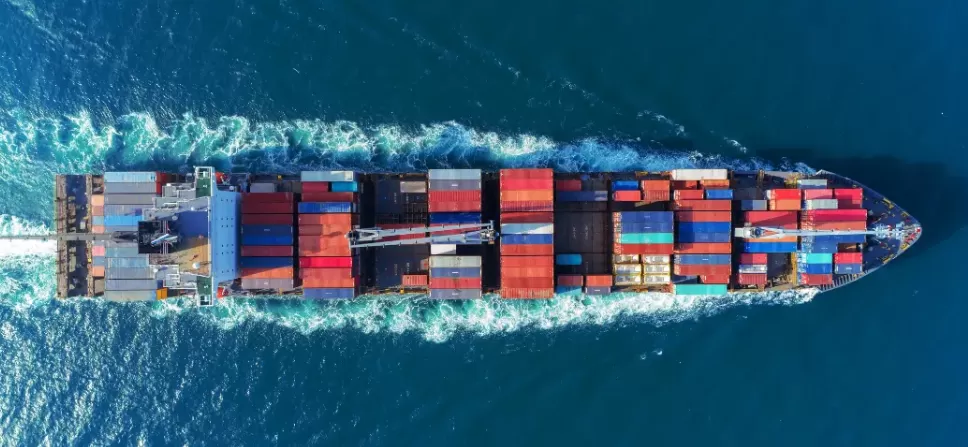Navigating the complexities of international shipping can feel overwhelming. When your supply chain stretches from China to a key industrial hub like Stuttgart, the stakes are even higher. You're likely asking yourself: What's the real cost? How long will it actually take? And how can I avoid the hidden fees and delays that derail my budget and timeline?
You're not alone in these questions. The difference between a smooth shipment and a logistical nightmare often comes down to one thing: having a clear, accurate, and actionable plan.
This comprehensive guide is designed to be that plan. We've distilled our expertise into a straightforward resource that will help you:
Understand and compare all available shipping methods (sea, air, rail, and hybrid options).
Decode the true cost of shipping, breaking down every component from ocean freight to Stuttgart local delivery fees.
Make informed decisions to balance speed and budget, using strategies tailored for businesses of all sizes.
Gain local insight into Stuttgart's specific logistics landscape, from customs to final-mile delivery.
Let's dive in and build a smarter, more reliable supply chain for your business.
Are you ready?
Get real-time quotes for Stuttgart
Get Quotes
1. Get Your Instant Stuttgart-Specific Quote
Trying to figure out the real cost of shipping from China to Stuttgart? You need numbers, not vague promises.
Here’s the reality: Your final cost depends on three key factors:
Shipping method (air, sea LCL/FCL, rail, or express)
Cargo details (weight, dimensions, and type of goods)
Additional services (customs clearance, insurance, door-to-door delivery)
Get Your Personalized Quote in 60 Seconds:
Use our instant quoting tool (available on our website) by entering:
Your origin city in China (Shanghai, Shenzhen, Ningbo, etc.)
Gross weight and volume (CBM)
Preferred shipping method
Destination (Stuttgart, Germany)
For Complex Shipments:
Contact our Stuttgart specialist team directly. We have dedicated managers who understand the specific requirements of shipping to Baden-Württemberg's industrial hub.
2. The Complete Logistics Matrix: Finding Your Best Path to Stuttgart
Here's the truth: No single shipping method works for everyone. Your choice depends entirely on your priorities between cost and speed.
The Stuttgart Logistics Matrix at a Glance:
| Method |
Typical Transit Time |
Best For |
Cost Perspective |
| Sea LCL |
50-60 days |
Small shipments (<15 CBM) |
Most economical for small volumes |
| Sea FCL |
45-55 days |
Full container loads |
Best value for large shipments |
| Rail |
25-35 days |
Time-sensitive, cost-conscious |
30-40% cheaper than air |
| Air Freight |
8-15 days |
Urgent, high-value goods |
Premium speed, premium price |
| Express |
4-7 days |
Samples, documents |
Fastest, most expensive per kg |
Key Shipping Terms Made Simple:
Door-to-Door: We handle everything from factory pickup to Stuttgart delivery
Port-to-Port: You manage both ends (China pickup and Stuttgart delivery)
Sea-Air Combination: Ocean to Middle East + air to Stuttgart - perfect balance
Sea-Truck: Ocean to Hamburg + truck to Stuttgart - most common for FCL
3. Air Freight: When Speed Becomes Your Competitive Advantage
Air freight isn't just for emergencies anymore. Smart businesses use it strategically when:
Your cargo value exceeds €50/kg
Stockouts would damage customer relationships
You're launching new products with uncertain demand
You need to maintain lean inventory levels
Understanding Your Air Options:
For Small, Urgent Shipments (Express: 10-120kg)
Integrated carriers (DHL, UPS, FedEx)
Perfect for samples, urgent documents, critical spare parts
Door-to-door convenience with full tracking
For Commercial Volumes (Air Freight: 100kg+)
100kg shipments: ~€4.50-6.00/kg
200kg+ shipments: ~€3.50-5.00/kg (volume discounts apply)
Critical detail: Air freight uses volumetric weight (length × width × height ÷ 5000)
The Stuttgart Advantage:
We route most air cargo through Frankfurt (FRA), which has multiple daily truck connections to Stuttgart. This often beats waiting for direct flights to smaller Stuttgart Airport and can save you 10-15% on pure airfreight costs.
4. Sea Freight FCL: Maximizing Value for Full Container Loads
When your business has matured to full container volumes, understanding your container options becomes critical for cost efficiency.
Container Specifications for Stuttgart Routes:
| Container Type |
Capacity |
Ideal For |
| 20' Standard |
33 CBM |
Dense cargo, machinery, packed goods |
| 40' Standard |
67 CBM |
Mixed cargo, furniture, general merchandise |
| 40' High Cube |
76 CBM |
Lightweight goods, oversized items |
| 45' High Cube |
86 CBM |
Maximum volume efficiency |
The Stuttgart FCL Reality Check:
Most FCL shipments arrive via Hamburg with inland transportation adding 1-2 days. However, here's what most forwarders won't tell you: During peak seasons, consider the Rotterdam route as an alternative to avoid Hamburg congestion, even if it costs slightly more.
Pro Tip: If your cargo fills 75%+ of a container's volume, FCL usually beats LCL pricing and provides better protection for your goods.
5. Sea Freight LCL: The Smart Choice for Growing Businesses
LCL (Less than Container Load) isn't just for small businesses—it's for smart businesses that want to maintain flexibility while scaling.
Cost Structure by Volume:
1 CBM: €65-85/CBM (minimum charge applies)
5 CBM: €55-75/CBM (more competitive pricing)
10 CBM+: €45-65/CBM (significant volume discounts)
Why LCL Makes Sense for Stuttgart:
Perfect for Amazon FBA sellers testing new products
Ideal for manufacturers with regular but small shipments
No long-term commitment required
Pay only for space you use
The 15 CBM Rule:
This is the magic number where LCL and FCL prices often converge. Always compare both options when you reach this volume—you might be surprised that a dedicated container costs the same or less than shared space.
freight forwarding
Get real-time quotes for freight forwarding
Get Quotes
6. [Exclusive Content] Sea-Air & Sea-Truck: The Hidden Gems for Stuttgart Shipping
Why you can't decide between air and sea? Because you haven't discovered Sea-Air.
Sea-Air: The Perfect Balance
What it is: Ocean to Middle East/UAE + air to Stuttgart
Transit time: 20-30 days total
Cost savings: 30-50% cheaper than pure air freight
Perfect for: Time-sensitive goods with moderate budgets
Sea-Truck: The Stuttgart Workhorse
What it is: Ocean to Hamburg + truck to Stuttgart warehouse
Transit time: 45-55 days total
Cost structure: Most economical for large shipments
Ideal for: Amazon FBA sellers, established importers
Real-World Example:
A Stuttgart automotive parts supplier switched from pure air to Sea-Air for their €200,000 monthly shipments. Result: 35% cost reduction while maintaining 25-day delivery timelines.
7. [Local Expertise] Stuttgart-Specific Routes & Customs Intelligence
This is where generic forwarders fail: Stuttgart isn't just another German city—it's a specialized logistics ecosystem.
Optimal Routes to Stuttgart Analyzed:
Northern Gateway: Hamburg Route
Ocean → port of Hamburg → Truck/Rail → Stuttgart
Inland transit: 1-2 days
Advantage: Highest frequency, most competitive pricing
Challenge: Peak season congestion
Southern Gateway: Mediterranean Option
Ocean → Rotterdam → Barge/Truck → Stuttgart
Inland transit: 2-4 days
Advantage: Avoids northern congestion
Consideration: Slightly longer transit times
Stuttgart Customs Intelligence:
Automotive parts require additional certifications
Electronics need proper valuation documentation
Chemical products face strict safety regulations
Food items have specialized import requirements
Local Insight: Stuttgart's city center has delivery time restrictions. Ensure your carrier knows these regulations to avoid costly waiting fees or failed deliveries.
8. Amazon FBA Special Section: Stuttgart Edition
Shipping to Amazon FRA/FDG warehouses? Standard approaches won't cut it.
Our FBA Process Perfected:
Collection from your Chinese suppliers
FBA labeling and packaging compliance check
Optimal routing selection based on your timeline
German import clearance using your German import clearance
Precise appointment scheduling with Amazon
Delivery and proof of delivery management
Critical FBA Requirements for Stuttgart:
Pallet standards: EUR-pallets, 500kg max weight
Labeling: FNSKU on every unit, specific placement rules
Appointment scheduling: Must be precise—early/late arrivals rejected
Documentation: Strict compliance requirements
Cost-Saving Tip: Consolidate multiple supplier shipments in our Chinese warehouses. One client saved 28% on ocean freight and eliminated three separate Stuttgart delivery charges.
Amazon FBA
Get real-time quotes for freight forwarding
Get Quotes
9. Practical Cost & Time Reduction Strategies
Lower costs don't come from negotiating harder—they come from working smarter.
5 Proven Cost Reduction Strategies:
1.Master the Cubic Meter Game
Track your shipment volumes religiously
Always compare LCL vs FCL at 15 CBM threshold
Use standard pallets to maximize container utilization
2.Consolidate Like a Pro
Use supplier supplier consolidation
Combine multiple small shipments into weekly consolidated containers
Leverage warehouse flexibility to build optimal loads
3.Optimize Your Packaging
Use right-sized boxes to avoid dimensional weight penalties
Implement standardized pallet patterns
Consider sustainable materials that are lighter and cheaper
3.Become a Documentation Expert
Prepare commercial invoices with perfect accuracy
Have certificates of origin ready before shipment departure
Use digital documentation to speed up clearance
4.Think Like a Stuttgart Local
Understand Stuttgart's delivery time windows
Plan for city center access restrictions
Build relationships with local trucking companies
The Stuttgart Advantage: Our local presence means we know which trucking companies have the best access to industrial areas and which customs brokers handle specific product categories most efficiently.
10. Your Next Steps Toward Better Stuttgart Shipping
Shipping from China to Stuttgart doesn't need to be complicated—it needs the right partner with the right knowledge.
Here's How to Proceed:
Get an Instant Quote using our digital tool for baseline pricing
Download Our Free Checklist: "15-Point Stuttgart Shipping Compliance Guide"
Schedule a Consultation with our Stuttgart specialists
Remember: The cheapest option often becomes the most expensive when you account for delays, hidden fees, and operational headaches. choosing the right logistics partner who understands both China logistics and Stuttgart's specific requirements.
Part of our expert team in Stuttgart, I've helped over 200 businesses optimize their supply chains between China and Southern Germany. Every week, we manage dozens of containers and air shipments specifically to the Stuttgart region, giving us unique insight into what actually works—and what doesn't.
Ready to optimize your China-Stuttgart supply chain? Contact us today for a personalized shipping strategy session.
Frequently Asked Questions (FAQs)
1. Q: My goods are temperature-sensitive. What are my options for controlled shipping from China to Stuttgart?
A: For pharmaceuticals, certain foods, or electronics, we offer climate-controlled solutions. This can mean temperature-controlled air cargo containers or, for less critical needs, insulated sea freight containers with thermal blankets. We monitor conditions throughout the transit and can arrange for certified climate-controlled trucking for the final leg to Stuttgart.
2. Q: What happens if my shipment is damaged upon arrival in Stuttgart?
A: The first step is to note any damage on the delivery receipt and take photos. Then, immediately inform us. We will help you file a claim with the insurance provider. Having a detailed packing list and photos of the properly packed goods before shipment greatly strengthens your claim.
3. Q: Are there any items I am completely prohibited from shipping from China to Stuttgart?
A: Yes, there are strict prohibitions. Common restricted items include counterfeit goods, certain weapons, hazardous materials without proper documentation, and protected animal/plant species (CITES). We provide a full checklist during the booking process to ensure your cargo is compliant.
4. Q: How does the insurance work, and is it worth the cost?
A: Marine Cargo Insurance typically covers physical loss or damage during transit. It's calculated as a small percentage of your goods' total value (e.g., 0.3%). For any shipment where a loss would significantly impact your business, it is highly recommended. It's a small price for significant peace of mind.
5. Q: Can you handle the entire process if I don't have a German VAT/EORI number yet?
A: While we can manage the physical logistics, you cannot clear goods through German customs without a valid EORI number. We strongly advise applying for one before your first shipment. We can guide you through the application process, but the number must be in your company's name.
6. Q: What is the "cargo readiness date," and why is it so important?
A: This is the date your goods are packed, labeled, and ready for pickup at the factory. Providing an accurate date is crucial because it allows us to secure the best-priced and timed container space or flight. A inaccurate date can lead to missed departures, storage fees in China, and weeks of delays.
7. Q: What if my Amazon FBA shipment is rejected at the warehouse in Stuttgart?
A: This is a risk. If Amazon rejects a pallet due to labeling or packaging issues, we can retrieve the shipment and take it to a local Stuttgart warehouse for reprocessing. This service incurs additional costs but prevents a total loss and allows you to fix the problem locally.
8. Q: What's the difference between a House Bill of Lading and a Master Bill of Lading?
A: The Master Bill of Lading is issued by the carrier (shipping line or airline) to us, the freight forwarder. The House Bill of Lading is the document we issue to you, our client. For most small-to-mid-sized importers, the House Bill of Lading is the document you use to prove ownership and clear your goods.
9. Q: Can I ship a vehicle or large machinery from China to Stuttgart?
A: Absolutely. This requires specialized handling, such as RORO (Roll-on/Roll-off) services for vehicles or flat-rack containers for oversized machinery. The key is precise measurements and weight, and we will handle all the necessary securing and documentation for out-of-gauge cargo.
10. Q: Do you offer storage services in Stuttgart if I'm not ready for delivery?
A: Yes, we have partnerships with secure warehouses in the Stuttgart area. You can ship a full container from China and have it stored until you need it, with a flexible "pay-as-you-go" model for the storage time. This is ideal for managing inventory flow and avoiding early Amazon storage fees.

 EN
EN
 FR
FR
 ES
ES
 JA
JA
 PT
PT
 RU
RU
 AR
AR
